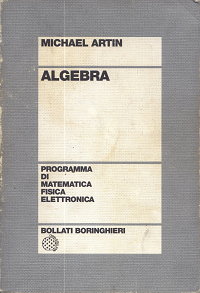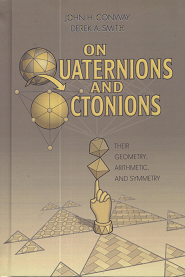Package Exports
- algebra
This package does not declare an exports field, so the exports above have been automatically detected and optimized by JSPM instead. If any package subpath is missing, it is recommended to post an issue to the original package (algebra) to support the "exports" field. If that is not possible, create a JSPM override to customize the exports field for this package.
Readme
algebra
Vectors, Matrices; Real, Complex, Quaternion; custom groups and rings for Node.js
Table Of Contents:


Status
algebra is under development, but API should not change until version 1.0.
I am currently adding more tests and examples to achieve a stable version.
Many functionalities of previous versions are now in separated atomic packages:
- algebra-group
- algebra-ring
- cayley-dickson
- indices-permutations
- laplace-determinant
- multidim-array-index
- tensor-contraction
- tensor-permutation
Features
- Real, Complex, Quaternion, Octonion numbers.
- Vector and Matrix spaces over any field (included Real numbers, of course :).
- Expressive syntax.
- Immutable objects.
- math blog with articles explaining algebra concepts and practical examples. I started blogging about math hoping it can help other people learning about the Queen of Science.
Installation
With npm do
$ npm install algebraWith bower do
$ bower install algebraor use a CDN adding this to your HTML page
<script src="https://cdn.rawgit.com/fibo/algebra/master/dist/algebra.min.js"></script>Quick start
This is a 60 seconds tutorial to get your hands dirty with algebra.
All code in the examples below is intended to be contained into a single file.
First of all, import algebra package.
var algebra = require('algebra');Scalars
Use the Real numbers as scalars.
var R = algebra.Real;Every operator is implemented both as a static function and as an object method.
Static operators return raw data, while class methods return object instances.
Use static addition operator to add three numbers.
console.log(R.add(1, 2, 3)); // 1 + 2 + 3 = 6Create two real number objects: x = 2, y = -2
var x = new R(2),
y = new R(-2);The value r is the result of x multiplied by y.
var r = x.mul(y);
console.log(r.data); // 2 * (-2) = -4
console.log(x.data); // still 2
console.log(y.data); // still -2Raw numbers are coerced, operators can be chained when it makes sense. Of course you can reassign x, for example, x value will be 0.1: x -> x + 3 -> x * 2 -> x ^-1
x = x.add(3).mul(2).inv();
console.log(x.data); // ((2 + 3) * 2)^(-1) = 0.1Comparison operators equal and notEqual are available, but they cannot be chained.
x.equal(0.1) // true
x.notEqual(Math.PI) // trueVectors
Create vector space of dimension 2 over Reals.
var R2 = algebra.VectorSpace(R)(2);Create two vectors and add them.
var v1 = new R2([0, 1]);
var v2 = new R2([1, -2]);
// v1 -> v1 + v2 -> [0, 1] + [1, -2] = [1, -1]
v1 = v1.add(v2);
console.log(v1.data); // [1, -1]Matrices
Create space of matrices 3 x 2 over Reals.
var R3x2 = algebra.MatrixSpace(R)(3, 2);Create a matrix.
// | 1 1 |
// m1 = | 0 1 |
// | 1 0 |
//
var m1 = new R3x2([1, 1,
0, 1,
1, 0]);Multiply m1 by v1, the result is a vector v3 with dimension 3. In fact we are multiplying a 3 x 2 matrix by a 2 dimensional vector, but v1 is traited as a column vector so it is like a 2 x 1 matrix.
Then, following the row by column multiplication law we have
// 3 x 2 by 2 x 1 which gives a 3 x 1
// ↑ ↑
// +------+----→ by removing the middle indices.
//
// | 1 1 |
// v3 = m1 * v1 = | 0 1 | * [1 , -1] = [0, -1, 1]
// | 1 0 |
var v3 = m1.mul(v1);
console.log(v3.data); // [0, -1, 1]Let's try with two square matrices 2 x 2.
var R2x2 = algebra.MatrixSpace(R)(2, 2);
var m2 = new R2x2([1, 0,
0, 2]),
m3 = new R2x2([0, -1,
1, 0]);
m2 = m2.mul(m3);
console.log(m2.data); // [0, -1,
// 2, 0]Since m2 is a square matrix we can calculate its determinant.
console.log(m2.determinant.data); // 2



